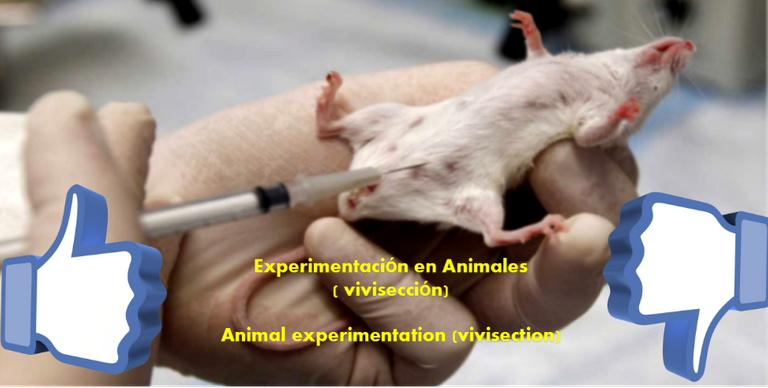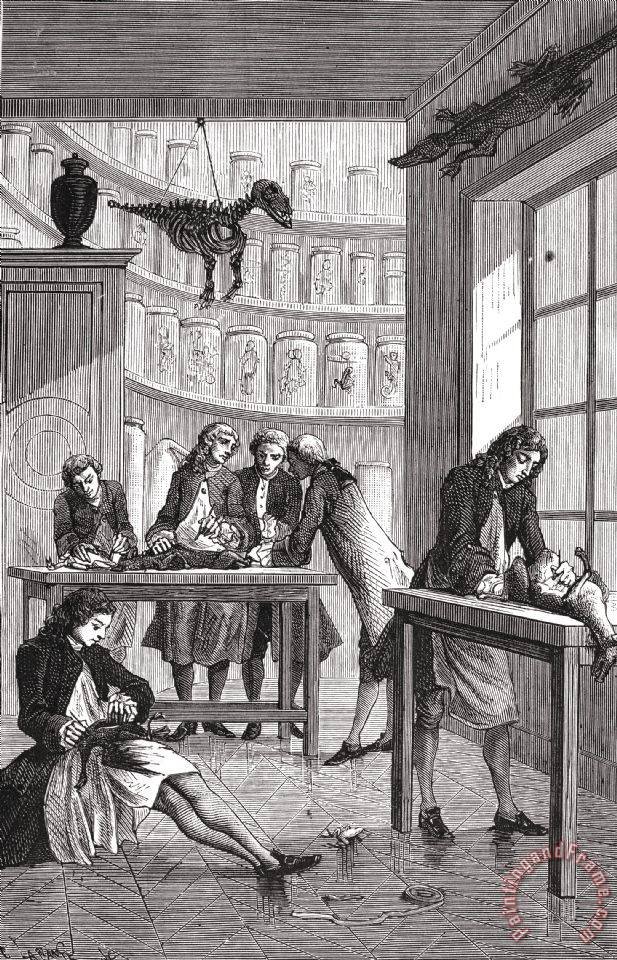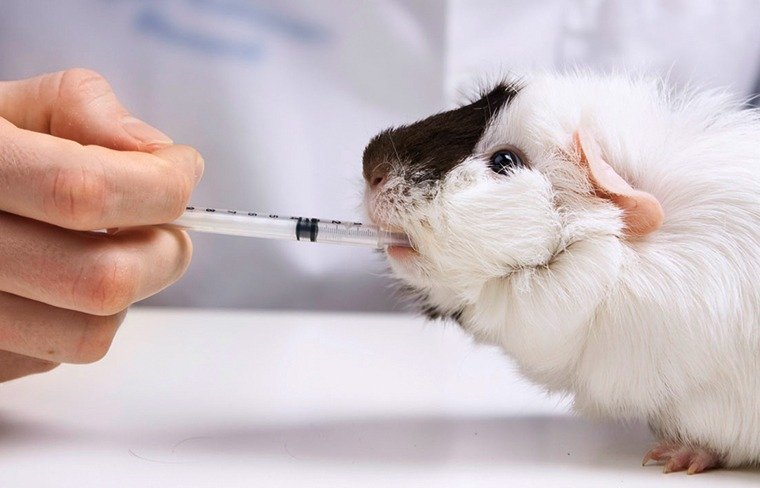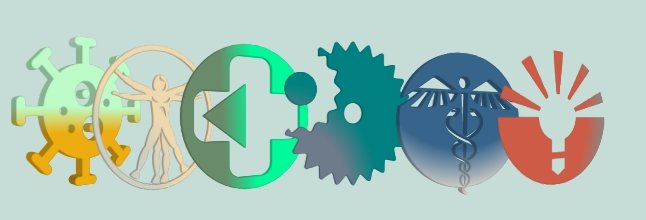Experimentación en Animales (Vivisección) / Animal Experimentation (Vivisection)

Experimentación en Animales (Vivisección)
Animal Experimentation (Vivisection)
Hola amigos de la colmena, el día de hoy les traigo un tema muy polémico en el mundo científico e investigativo. “La experimentación en animales”, quiero que sepas que en este post hablare del modo mas imparcial posible, ya que amo los animales pero tambien entiendo los avances que se han logrado en la medicina gracias a ellos.
Hello friends of the hive, today I bring you a very controversial topic in the scientific and research world. "Experimentation on animals", I want you to know that in this post I will speak in the most impartial way possible, because I love animals but I also understand the advances that have been achieved in medicine thanks to them.
La vivisección es el nombre técnico de la experimentación con animales a nivel científico. Esta es una metodología de prueba muy común en la actualidad.
Vivisection is the technical name for animal experimentation at the scientific level. This is a very common testing methodology today.

Desde hace unos 500 años, la ciencia se ha valido de la experimentación con animales. Al principio, la finalidad era conocer a cabalidad la fisionomía de tales especies para comprender mejor la del humano. El primer experimentador biológico del cual se tenga noticia histórica es Alcmeón de Crotona, el cual demostró la función del nervio óptico al seccionarlo provocando la ceguera de un animal, en el año 450 a. C. Este lo menciono por primera vez, como dos canales que conducían el espíritu del cerebro a los ojos, aunque su explicación no era totalmente convincente, se demostraba que el nervio óptico trasmitía las señales del ojo al cerebro.
For some 500 years, science has been experimenting on animals. Initially, the aim was to gain a thorough understanding of the physiognomy of such species in order to better understand the physiognomy of humans. The first historically recorded biological experimenter was Alcmeon of Crotona, who demonstrated the function of the optic nerve by severing it and causing blindness in an animal in 450 B.C. He first mentioned it as two channels that conducted the spirit from the brain to the eyes, although his explanation was not entirely convincing, but it was shown that the optic nerve transmitted signals from the eye to the brain.

Durante la historia tambien se tienen registros de experimentación en humanos, de hecho la palabra nigromante se le designaba las personas que experimentaban con los muertos, pero no seria hasta la Segunda Guerra Mundial cuando la investigación Biomédica en humanos sobrepasaría los limites de la perversión humana, en donde sujetos humanos fueron utilizados para experimentos científicos espeluznantes, muchos de ellos mortales, en los que participaron de manera forzada. En 1955 hasta 1976 miles de mujeres con lesiones pre-cancerosas fueron dejadas sin medicamentos de manera deliberada, para ver si desarrollaban cáncer de cervical, esto se conoció como el “desafortunado experimento”
Throughout history there are also records of human experimentation, in fact the word necromancer was used to designate people who experimented on the dead, but it was not until the Second World War that human biomedical research would push the limits of human perversion, where human subjects were used for lurid scientific experiments, many of them lethal, in which they were forced to participate. In 1955 until 1976 thousands of women with pre-cancerous lesions were deliberately left without medication to see if they would develop cervical cancer, this became known as the "unfortunate experiment".
Todo esto que cuento por encima de los experimentos en animales y humanos, es para mostrar las atrocidades que se han hecho durante la historia y que son grandes avances que hacen que hoy día cuando nos enfermamos tengamos un tratamiento adecuado y nos salven la vida.
All this that I am telling about, over and above the experiments on animals and humans, is to show the atrocities that have been done throughout history and that are great advances that mean that today, when we get sick, we have adequate treatment and save our lives.
En la actualidad.
At present.
Cada año más de 100 millones de animales mueren víctimas de experimentos. Los principales sectores donde son utilizados con este fin son las industrias militar y cosmética, la ciencia y en prácticas docentes (estudios de veterinaria, por ejemplo).
Every year more than 100 million animals die as a result of experiments. The main sectors where they are used for this purpose are the military and cosmetics industries, science and in teaching practices (e.g. veterinary studies).

En el área de la biología, el desarrollo del conocimiento, de nuevas hipótesis y demostraciones implica el uso de modelos experimentales adecuados al objetivo planteado (pilar fundamental del denominado método científico): en este caso concreto, se trata de seres vivos.
In the area of biology, the development of knowledge, new hypotheses and demonstrations involves the use of experimental models appropriate to the objective (a fundamental pillar of the so-called scientific method): in this particular case, we are dealing with living beings.
La pruebas en especies no humanas estimulan la investigación, pero tambien las protestas por los defensores de las faunas, que denuncian el trato inequitativo y el sufrimiento de los animales.
Tests on non-human species stimulate research, but also protests by wildlife advocates, who denounce the unfair treatment and suffering of animals.
¿Por qué se realiza experimentación con animales a nivel científico?
¿Why is animal testing carried out at the scientific level?
- 1. Para lograr un progreso del conocimiento científico: el estudio de los animales es una parte fundamental de este proceso de investigación. Muchos procesos celulares básicos son iguales en todos los animales y los cuerpos de los animales son como los de los seres humanos a la hora de realizar muchas funciones vitales, como la respiración, la digestión, el movimiento, la vista, la audición y la reproducción. Para tratar la enfermedad, los médicos y científicos deben entender cómo funciona el organismo sano. Esto, a su vez, permite entender lo que le ocurre al organismo cuando caemos enfermos y cómo se puede poner bien.
- 1. To advance scientific knowledge: the study of animals is a fundamental part of this research process. Many basic cellular processes are the same in all animals, and animal bodies are like those of humans in performing many vital functions, such as breathing, digestion, movement, sight, hearing and reproduction. To treat disease, doctors and scientists must understand how the healthy organism functions. This, in turn, allows us to understand what happens to the body when we fall ill and how it can get well.
- 2. Como modelos para el estudio de una enfermedad: los seres humanos y los animales comparten cientos de enfermedades y, por lo tanto, los animales pueden actuar como modelos para el estudio de las enfermedades humanas. Por ejemplo, los conejos sufren arteriosclerosis (endurecimiento de las arterias) y enfermedades como el enfisema, así como defectos congénitos como la espina bífida. Los perros sufren cáncer, diabetes, cataratas, úlceras y trastornos hemorrágicos, como la hemofilia, lo que los convierte en candidatos naturales para la investigación de estos trastornos. Los gatos comparten algunos problemas de visión con los humanos. Gracias a estos modelos aprendemos cómo la enfermedad afecta al organismo, cómo responde el sistema inmunitario, quién se verá afectado, etc.
- 2. As models for the study of disease: Humans and animals share hundreds of diseases and therefore animals can act as models for the study of human diseases. For example, rabbits suffer from arteriosclerosis (hardening of the arteries) and diseases such as emphysema, as well as birth defects such as spina bifida. Dogs suffer from cancer, diabetes, cataracts, ulcers and bleeding disorders such as haemophilia, making them natural candidates for research into these disorders. Cats share some vision problems with humans. Using these models, we learn how the disease affects the body, how the immune system responds, who will be affected, and so on.
- 3. Para proteger la seguridad de las personas, de los animales y del medio ambiente: los nuevos medicamentos necesitan ser testados, porque los investigadores deben medir tanto los efectos beneficiosos como los nocivos de un compuesto sobre un organismo completo. Inicialmente un medicamento se testa in vitro, utilizando tejidos y órganos aislados, pero desde un punto de vista jurídico y ético también debe testarse en un modelo animal apropiado antes de poder realizar ensayos clínicos con seres humanos.
- 3. To protect the safety of humans, animals and the environment: new medicines need to be tested, because researchers must measure both the beneficial and harmful effects of a compound on a whole organism. Initially a medicine is tested in vitro, using isolated tissues and organs, but from a legal and ethical point of view it must also be tested in an appropriate animal model before clinical trials can be conducted on humans.

¿Existen alternativas para dejar esta practica?
Are there alternatives to stop this practice?
En la teoría si existen, pero en la practica o son muy costosas o muy difíciles de realizar con la tecnología actual.
In theory they exist, but in practice they are either very expensive or very difficult to implement with current technology.
¿Cuales son las alternativas?
What are the alternatives?
Los biólogos ingleses W. M. S. Russell y R. L. Burch formularon en su libro The principles of humane experimental technique lo que llamaron el principio de las tres erres: reemplazar, reducir y refinar.
English biologists W. M. S. Russell and R. L. Burch formulated in their book The principles of humane experimental technique what they called the three Rs principle: replace, reduce and refine.
- 1. La primera erre alude a métodos que eviten o sustituyan el uso de animales. Esto incluye tanto los reemplazos absolutos (sustituir animales por cultivos celulares y modelos informáticos).
- 1. The first R refers to methods that avoid or replace the use of animals. This includes both absolute replacements (replacing animals with cell cultures and computer models).
- 2. La segunda erre alude a cualquier estrategia que tenga como resultado el uso de un menor número de animales para obtener información, o la maximización de la información obtenida por animal (por ejemplo, al compartir órganos), para así limitar o evitar el uso posterior de otros.
- 2. The second "R" refers to any strategy that results in the use of fewer animals to obtain information, or the maximisation of the information obtained per animal (e.g. by sharing organs), so as to limit or avoid the subsequent use of others.
- 3. En cuanto a la tercera erre, alude a la modificación y mejoramiento de las técnicas experimentales para minimizar el dolor, el sufrimiento y la angustia de los animales, así como para mejorar su bienestar desde su nacimiento hasta su muerte.
- 3. The third "R" refers to the modification and improvement of experimental techniques to minimise pain, suffering and distress of animals and to improve their welfare from birth to death.

Argumentos siempre existirán para apoyar a uno u otro, Sería un error prohibirla porque salva vidas humanas”, comenta el neurocientifico Ranier Gutiérrez, también del CINVESTAV, quien ha experimentado con primates y actualmente realiza pruebas de optogenética (manipulación de neuronas mediante pulsos de luz) en ratas. Por otro lado los defensores de la fauna pugnan porque se utilicen métodos de investigación alternativos donde en vez de ejemplares vivos se evalúen cultivos celulares o de tejidos (in vitro), plantas, modelos virtuales computarizados (in silico), humanos voluntarios aquejados por alguna enfermedad e incluso referencias retrospectivas de estudios epidemiológicos o poblacionales.
There will always be arguments to support one side or the other. It would be a mistake to ban it because it saves human lives," says neuroscientist Ranier Gutiérrez, also from CINVESTAV, who has experimented with primates and is currently testing optogenetics (manipulation of neurons by pulses of light) in rats. On the other hand, wildlife advocates are pushing for the use of alternative research methods where instead of live specimens, cell or tissue cultures (in vitro), plants, virtual computer models (in silico), human volunteers suffering from a disease, and even retrospective references from epidemiological or population studies are evaluated.
Lo cierto es que al final los aportes que han dado el sacrificio de muchos animales a sido beneficioso para tratar enfermedades mortales o que no permiten una calidad de vida buena a muchos seres humanos, pero el costo beneficio no se puede equilibrar sacrificando vidas de un lado o de otro, es por ello que día a día se debe incentivar al desarrollo de nuevas tecnologías y mecanismos de investigación que permitan llevar acabo investigaciones sin el sacrificio de un ser vivo.
The truth is that in the end the contributions that the sacrifice of many animals have made have been beneficial to treat deadly diseases or diseases that do not allow a good quality of life for many human beings, but the cost benefit cannot be balanced by sacrificing lives on one side or the other, which is why every day we must encourage the development of new technologies and research mechanisms that allow research to be carried out without the sacrifice of a living being.

Este contenido es de mi autoría.
Las imágenes utilizadas en este contenido tienen sus enlaces de referencia para los que son de otros autores.
This Content is of my Authorship.
The images used in this content have their reference links for those that are from other authors.
Enlaces de Interes / Links of Interest
https://encyclopedia.ushmm.org/content/es/article/nazi-medical-experiments
https://es.wikipedia.org/wiki/Historia_de_la_experimentaci%C3%B3n_con_animales
https://www.paradais-sphynx.com/noticias/experimentacion-con-animales.htm
https://www.eara.eu/cuarenta-razones-para-defender-la-i
Interesting article to which I read with great interest as I am one of those people who wholeheartedly believe from logic, commonsense, ethics and plain and simple compassion and an innate link to animals that animals should NOT be used for testing under any circumstance any more.
I understand why there was a need from a scientific and medical perspective to experiment on animals, but that need is no longer there as there are other alternatives and we are now in the 21st century, not the dark ages where they had no idea and would sacrifice animals to appease the gods after a bad crop.
How absolutely absurd that was and still is for the contemporary religious and cultural 'festivals' that still do the same in this day and age.
As you inferred, animals are physiologicaly no different to humans and suffer many of the same ailments, which is only absolute logic that they do, however they do not get a choice whether they want to become involved in those clinical trials- like we humans do.
Most humans are appalled and horrified by the atrocious experiments conducted on so many millions by the Nazi party, but have no problem of letting some psychopath in a white lab coat do the same to another groups of beings.
Both groups were and are forced to participate with no choice, but yet one group has been seeking justice with the support of the world over ever since while the other still suffers and apart from the physical appearance, there is no difference between each group. They are both living, breathing, sentient beings, deserving no less than each other.
So it is so simple to me and many others. Vivisection must stop for so many reasons, including the use of animals in the cosmetic industry.
If the 'scientists' and I say that word very loosely...have any inkling that the material that they are using to create a product has any chance of being toxic- then don't use it!
It really is as simple as that, therefore they won't need to test it on animals and will know right from the start that it is safe for humans.
And it does not take a scientist to know that if you stick ANYTHING in an eye- animal or human, that it's damn well going to hurt. Even a child knows that!
Again, plain and simple logic dictates that you do not need an animal to tell you that it's going to hurt if you get that shampoo/mascara/lipstick/foundation in your eye, therefore, no need to test on animals and I don't care how hard that these sociopaths try to justify the use of animals in any scientific experiment, there is no reason and no excuse, not even under the guise of medical science any more.
And if humans do get shocked by the stinging pain in their eyes when they do get any kind of cosmetics in them, then that serves themselves right for being so bloody brainless in the first place.
And if there are people out there that don't like my comment here, well lets see them put their hand up to volunteer to be an actual lab rat/cat/dog/mouse/etc, because I know that they won't.
I understand your point of view, and that is why day by day professionals who have the possibility to leave these practices aside, have to do it, because it generates a great change.
One of the main reasons that led me to study biomedical engineering is the great change that can be generated in support of animals, from prostheses for them, to design equipment to analyze samples without using animals. but there is a great reality that you and I can not leave aside, that even the technology is yet to evolve and end the use of animals, for it to evolve we must force governments and private companies to invest in technology, in this way we will achieve that this ends.
Agreed.
For every negative there is always the positive side and humanity is finally waking up to realise this, specifically in regards to supporting animals with the us of external prothesis and such, and yes, now we need to force the govts to invest in emerging tech, but unfortunately with Big pharma constantly putting $$$$ in their back pockets, like the fossil fuel mining sector, it is going to be a battle to force them into it-whci is exactly why we do need people like you working in the industry and working on postive progression from INSIDE the industry, to people like me who create intelligent, thought provoking, investigative docuseries to educate the masses as only then, once the masses are aware and realise the change that is needed, will pressure be put on the govts and big pharma.
This is my purpose in life. Nothing else but this. https://chocolatescorpion.com/projects